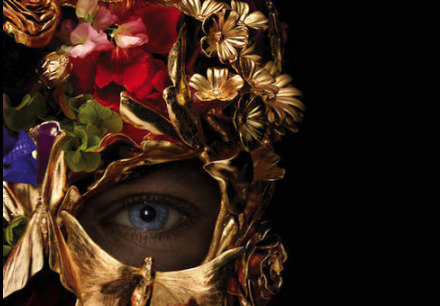Asked recently to describe Alexander McQueen to a friend with little knowledge of fashion, the best I could think of was to say, “He basically gave Lady Gaga her entire aesthetic.” That’s, of course, an overly simplistic way of looking at it, not least because Gaga isn’t the only one whose approach to sartorial risk-taking is heavily influenced by the late British fashion iconoclast. Rising quickly from a protegé of fashion editor Isabella Blow to creative director of Givenchy and owner of his own label, McQueen rose to prominence during a period where not just models but also fashion designers were becoming celebrities in their own right. He had an undeniable talent and a knack for getting the fashion gatekeepers that his work was designed to piss off to write him checks anyway. And he hated it—hated being famous, hated being respectable, hated pretty much everything but his dogs and working in his studio with the close-knit group of colleagues who were his only real friends.
Those colleagues, along with members of McQueen’s family and former lovers, provide a rare, intimate look into the designer’s private world in McQueen, a film that’s refreshingly free of the gushing sound bites from sycophantic celebrities that too often dominate fashion documentaries. The intimate vibe is established right from the start, as subjects begin talking about “Lee” McQueen without any sort of context; it’s not until later that someone mentions that it was Blow who suggested that he use his middle name, Alexander, for his eponymous fashion line. (It sounded more posh, apparently.) The documentary wastes no time getting into McQueen’s career—it was what he lived for, after all—spending less than five minutes on his childhood; 13 minutes in to the nearly two-hour film, the first of many McQueen creations featured in the film walks down the runway.
Reflecting the deeply personal nature of McQueen’s work, the film is structured around five collections, each reflecting a significant turning point in his life. The Lee we meet in McQueen is as unassuming as his work is outrageous, a chubby kid in a plaid button-down and sneakers who you would never expect to be the mad genius behind theatrical runway shows with titles like Jack The Ripper Stalks His Victims, The Highland Rape, and Voss, a show that culminated in the reveal of a giant glass box containing a voluptuous woman in a gas mask lying nude on a couch like a dystopian odalisque, moths fluttering around her head. “Fat birds and moths, isn’t that fashion’s worst nightmare?” the model chuckles.
Along with footage from McQueen’s fashion shows, animated title cards featuring McQueen’s beloved skulls and butterflies, talking-heads interviews, and archival clips, McQueen also makes extensive use of home-video footage shot by the designer himself, revealing a playful side that contrasts with his avant-garde work. Together these form a portrait of a man who very few people really knew, even as he paraded his nightmares and neuroses down the runway several times a year. Even when discussing events like the childhood abuse that drove his most disturbing work, co-directors Ian Bonhôte and Peter Ettedgui foreground the fashion, which is presumably how McQueen would have wanted it.
Less clear is how the famously confrontational designer would feel about the documentary’s kid-gloves approach to the tragic consequences of the darkness that plagues many artists: A long sequence dedicated to Blow’s death dances around the fact that she died by suicide, and although mentioning the manner of McQueen’s own death—also a suicide—is unavoidable, the word itself is never mentioned. It’s an especially odd move, given that the documentary does not shy away from discussing McQueen’s drug abuse and sometimes turbulent relationships with his collaborators. Also left out is any mention of the McQueen brand after its founder’s death, and current creative director/longtime head of womenswear Sarah Burton—whose designs are a favorite of Duchess Of Cambridge Kate Middleton—is notably absent from the list of interviewees.
According to Ettedgui, this was not a personal slight, but part of a deliberate creative choice to foreground Lee McQueen the man and not Alexander McQueen the brand. That’s something that, based on this documentary’s depiction of McQueen’s personality, he probably would have appreciated. The fact that one can feel confident in saying that after watching McQueen is a testament to the film, which manages to both emphasize McQueen’s groundbreaking work and give moving insight into his personality. More often than not, they were one and the same.


 Keep scrolling for more great stories.
Keep scrolling for more great stories.